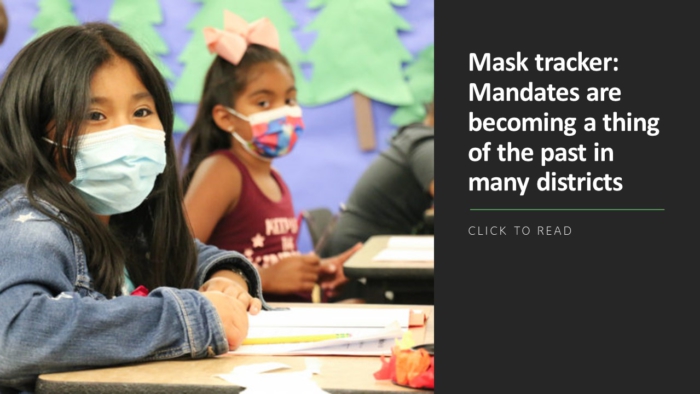Go back in time with us for a moment: At the end of 2020-21, the first full school year of COVID, the big instructional challenge facing schools seemed obvious. District leaders and their teams, looking ahead to 2021-22, were strategizing to help students rebound academically as quickly as possible.
Among their priorities were grade-level instruction and immediate intervention rather than remediation and holding students back with lower-level coursework. However, attempts at acceleration hit some unexpected roadblocks—such as the delta and omicron variants and pushback against mask mandates, according to the latest round of interviews with K-12 leaders by the Center on Reinventing Public Education at the University of Washington. For K-12 leaders, responding to these unforeseen political and social-emotional issues was like playing the carnival game “Whack-A-Mole” as they tried to implement their acceleration plans, the center’s latest report says.
“The strategy was complicated by a host of factors that made getting to instruction difficult: challenging student behaviors, staffing shortages, and the politicization of health, safety, and education,” the report says. “Leading school districts in the fall involved managing a string of problems across different issues, making the pandemic’s second school year, in some ways, more challenging than the first.”
Overcoming these various challenges, however, is also helping district administrators chart a path forward for 2022-23 and beyond. Ultimately, strong leadership is seen as one of the most important elements in helping students and teachers bounce back. “Without skillful superintendents who know their communities, schools could be even more whipsawed by having to navigate divided opinions about pandemic safety measures as well as student learning,” the report says. “In the face of this daunting work, it is essential for state and municipal leaders to provide sustained support and political cover for district leaders.”
Here’s a look at the factors that have interfered with academic recovery and how K-12 leaders are responding:
1. Central offices need new ways to support learning: A lack of statewide testing data from spring 2020 required district leaders to develop school-level assessments to determine students’ academic needs on an ongoing basis. In the months and years ahead, leaders say principals will be instrumental in guiding teachers in conducting these “micro-assessments” to quickly identify when students are struggling.
More from DA: Did superintendents get big raises during year 3 of COVID?
2. Many students will need more than acceleration to catch up and stay engaged: Many leaders are expanding tutoring, enrichment and other outside-of-class activities to provide students with extra support in recovering from COVID’s disruptions. These approaches are requiring more collaboration and consultation among schools and central offices. Administrators are also finding that personalized tutoring for students is proving to be more effective than a one-size-fits-all intervention. In one district, individual schools are choosing and designing their tutoring programs.
3. Concerns about teacher habits from remote learning: Some leaders found teachers have developed “bad habits” such as lowering expectations, offering students low-level learning activities during remote instruction and an over-reliance on technology. Administrators are engaging teachers in ongoing discussions about new units of study that encourage deeper, more authentic learning. Progress will therefore require “top-down support for bottom-up problem-solving.”
Complicating these issues further are 4.) continued political controversies, 5.) burnt-out teachers, and 6.) ongoing behavioral problems that many educators blame on students missing out on key developmental stages.
Consequently, not all signs are hopeful, the report warns. “Some localities, likely rural areas and big urban systems that are not driven by conflicts about vaccinations and culture, might have stable enough environments to make progress possible in the next year or two,” the authors say. “Others, particularly those where competing parent groups are mobilized and school boards are under attack, might not.”
The report calls on policymakers and political leaders to provide clear guidance on COVID regulations and absorb some of the political heat rising from battles over curriculum. “We should value and protect district leaders so they can set a consistent strategy of improvement that builds over time and incorporates lessons learned,” the report concludes. “Now more than ever, in light of many challenges facing schools, public education needs leaders who are knowledgeable and politically adept.”



